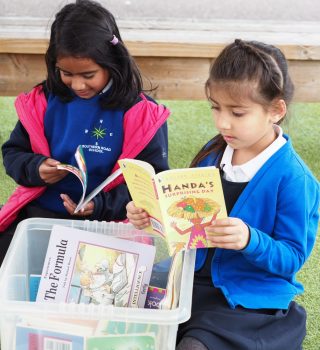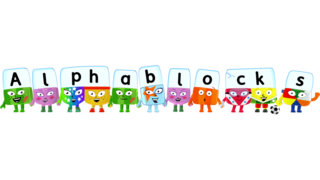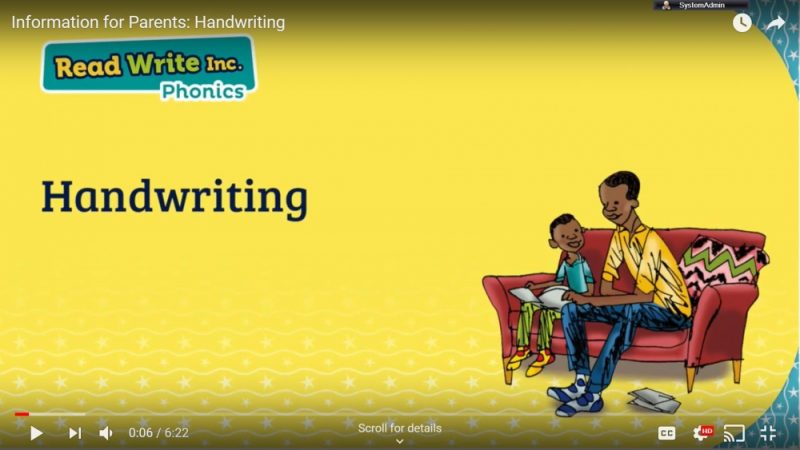Phonics is a method of teaching children to read by linking sounds and symbols that represent them.

At Southern Road we use a variety of ways to teach phonics and we have developed our own phonics scheme of work tailored to meet the needs of our children. In Nursery this primarily focuses on Phase One of the DfE letters and sounds document. Phase One encourages children to listen to different sounds in the environment and explore noises that they can hear. When children are ready (usually towards their final term in Nursery) Phase Two will be introduced. Phase Two introduces the initial letter sounds in groups (e.g. s,a,t,p,i,n). A range of methods including songs with actions, writing in the air and in sand are used to reinforce the learning.
In Reception we further embed the learning of the initial sounds using kinaesthetic as well as visual methods which helps children to progress in reading and writing. Once children have mastered their initial sounds, skills such as blending and segmenting are taught. We base our resources loosely on the Read Write Inc. programme of teaching synthetic phonics. This is then continued as the children progress throughout Key Stage One.
Children are taught at their own level and resources are therefore matched appropriately to the needs of the children. Speed sound charts are used rigorously to ensure all sounds are taught throughout Key Stage One. Any children who are new to the school will have their phonics level assessed and then have their needs catered for. Half termly assessments devised by Southern Road are used to assess children’s progress and these are then used to inform teachers’ planning and provide children with their next steps in learning.
Phonics Resources, What is phonics?
Phonics is the system of ‘blending’ sounds together to read, and ‘segmenting’ sounds to spell. They are linked skills that are taught together. You may hear your children use some vocabulary that you are not familiar with that they have learnt in their phonics lessons.
Bouncy or stretchy?
The sounds the letters make are sorted into either bouncy or stretchy.
|
Bouncy letters
a, e, i, o, u, b, c, d, g, h, j, k, p, qu, t, w, x, y, ch. |
Stretchy letters
f, l, m, n, r, s, v, z, sh, th, ng, nk
|
We teach the children to say the ‘pure’ sound with no ‘”uh” on the end. Watch how to pronounce each letter here:
How can you help your child learn the sound each letter makes? Say the sound
Sing, stretch or bounce the sound, say children’s names which start with the sound or words which start with the sound.

Run your finger over the picture saying the sound and end with the word, e.g. “mmmm…mountain.”
Run your finger over the letter, saying the sound and ending with the letter e.g. “mmmmm….m”
Watch how to do this here.
Diagraphs.
Consonant and vowel diagraphs—sounds which have 2 or 3 letters representing them, e.g. /ch/, /ng/, /th/, /sh/, /igh/, /air/.
Split diagraphs—when 2 letters are separated by another letter, e.g. /i-e/, /o-e/ in words such as time, home. Watch how to do this here ;
How can you help your child blend the sounds?

Fred talk
Fred can only talk in sounds.
Children ‘Fred’ talk too by saying each sound in a word. They gradually say them quick enough to blend the sounds together to achieve saying the entire word. E.g Fred talk m – a – t leads to saying “mat” as one entire word.
Say a word in ‘Fred’ talk and encourage your child to blend it to make the word. E.g Parent : ”Touch your h-ea-d…Child: “head”. Support your child to blend every step of the way so they achieve early success and believe they can do it!
Watch how to do this here!
How can you help your child write the letters correctly?

Use the writing chart to remind your child how to form their letters.
Every letter APART from the letters ‘d’ and ‘e’ starts at the top.
Encourage your child to nip the pencil, flip the pencil and then grip it. Download writing letters chart here.
Fred fingers

We use ‘Fred fingers’ to count the sounds in a word. Each finger is worth one sound.
Remember praise, praise and more praise!
Helpful Tips!
Read to your child every day and talk about the book before you start.
Listen to your child read every day for ten minutes.
Talk about what is happening in the book. E.g I think she is…Look at…Maybe they will…
Ask your child questions E.g. What do you think he is…Why is she… Do you like to….What will happen next?
Re-read favourite stories; repetition is good!
Please speak to your child’s class teacher if you have any questions or concerns.
Watch out for the red words (high frequency words) which the children cannot ‘Fred’ talk.
The to I go to into
he she we me was
you they all are my her
Your child will begin to learn these words starting in Early Years.
To download the list of ‘red words’ click on Reception Red Words, Year 1 Red Words and Year 2 Red Words
When will your child learn the sounds?
Foundation Stage—Set 1 & 2 Year One—Set 2 &3

Download resources
Further information can be found here:
Useful Websites
 www.oxfordowl.co.uk A website which has free online e-books and good advice on how to support your child.
www.oxfordowl.co.uk A website which has free online e-books and good advice on how to support your child.
 www.mrthorne.com A really fun website which helps support children’s pronunciation recognition of all the sounds they need to know.
www.mrthorne.com A really fun website which helps support children’s pronunciation recognition of all the sounds they need to know.
 www.bbc.co.uk/cbeebies/shows/alphablocks A really fun and interactive way to learn how to blend sounds together to make words.
www.bbc.co.uk/cbeebies/shows/alphablocks A really fun and interactive way to learn how to blend sounds together to make words.
 Challenge your child to identify the correct high frequency (red words) word in this game. http://www.ictgames.com/dinosaursEggs/index.html
Challenge your child to identify the correct high frequency (red words) word in this game. http://www.ictgames.com/dinosaursEggs/index.html











